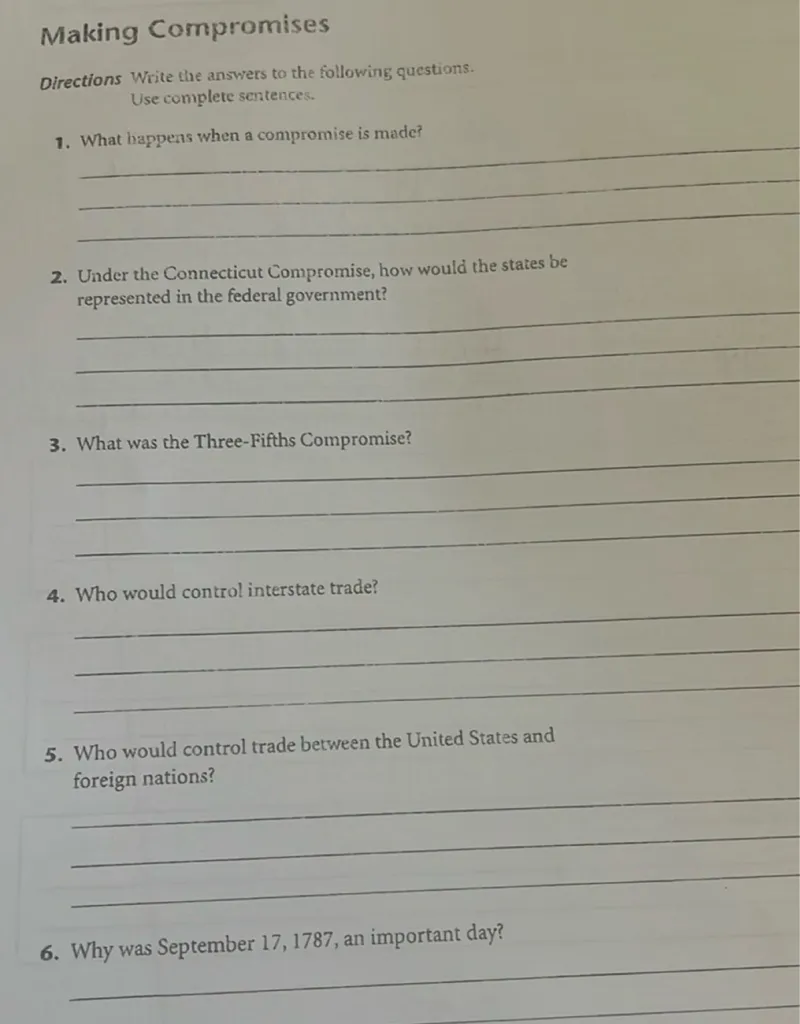Questions: Making Compromises Directions Write the answers to the following questions. Use complete sentences. 1. What happens when a compromise is made? 2. Under the Connecticut Compromise, how would the states be represented in the federal government? 3. What was the Three-Fifths Compromise? 4. Who would control interstate trade? 5. Who would control trade between the United States and foreign nations? 6. Why was September 17,1787 , an important day?

Transcript text: Making Compromises
Directions Write the answers to the following questions.
Use complete sentences.
1. What happens when a compromise is made? $\qquad$
$\qquad$
$\qquad$
2. Under the Connecticut Compromise, how would the states be represented in the federal government? $\qquad$
$\qquad$
$\qquad$
3. What was the Three-Fifths Compromise?
$\qquad$
$\qquad$
$\qquad$
4. Who would control interstate trade?
$\qquad$
$\qquad$
$\qquad$
5. Who would control trade between the United States and foreign nations?
$\qquad$
$\qquad$
$\qquad$
6. Why was September 17,1787 , an important day?
$\qquad$





